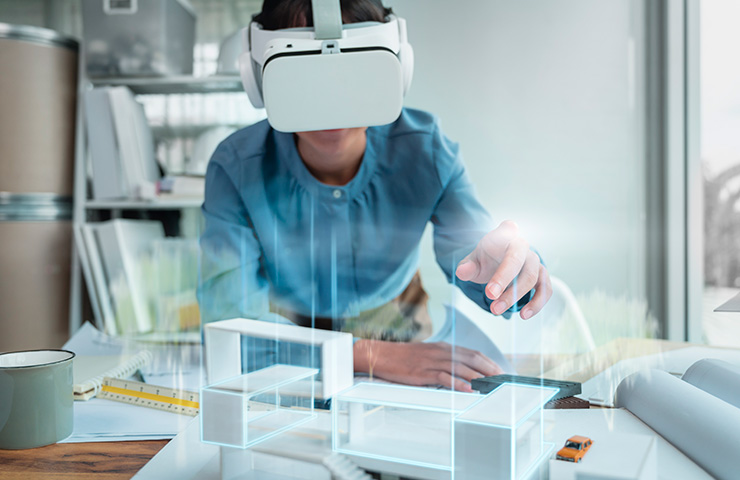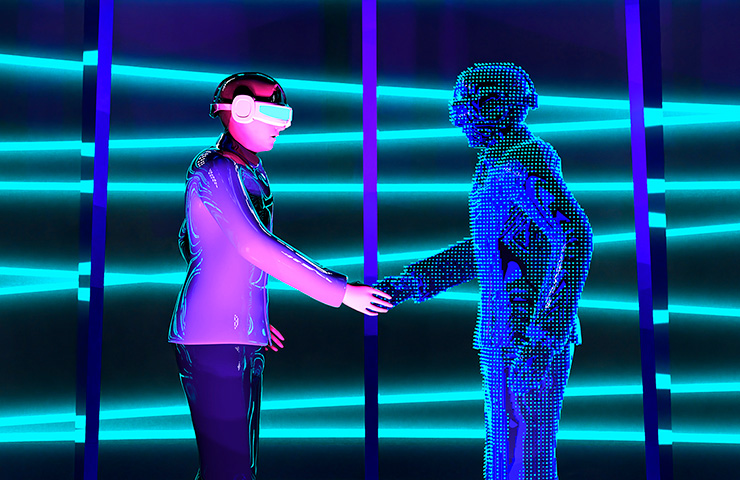25/04/2022
Top-of-class Master in Business for Architecture and Design alum, Yebin Sreenivasan, chats about the metaverse and its impact on the architecture and design industry.
Have you heard all the recent hype about the metaverse? If so, then you know that this futuristic concept is here to stay. Some might dismiss it as an unattainable goal, but the metaverse has already started to have some unexpected ripple effects for many professional architects and designers.
Yebin Sreenivasan is an alum of the IE School of Architecture and Design. He was recently on a panel of experts at an IE University event, talking about how architects and designers can find work in the metaverse. Read on to find out what Yebin had to say about this thought-provoking topic.
Meeting Yebin
Yebin has had a long, successful career in architecture over the last 20 years. His work has taken him across multiple continents, from Europe to Asia and the Middle East. Over the course of his career, Yebin has held various positions in architecture, design and management.
He recently graduated from IE University with a Master in Business for Architecture and Design at the top of his class. Now, Yebin works as the senior design manager for Majid Al Futtaim, the global mall and leisure developer. It’s safe to say that Yebin may be the best source on trends to watch out for in architecture and design.
Another passing fad?
Author Neal Stephenson coined the word “metaverse” in his 1992 science-fiction novel, Snow Crash. Yebin explained that, in the book, humans are programmable avatars who interact with each other in a three-dimensional virtual space instead of the real world. Can this concept from long ago become a reality in the present?

Yebin says that “the whole idea of virtual interaction and extending experience from a physical environment to a virtual one is here to stay.”
The only limit to further progress is the technology itself—for now. As technologies in augmented and virtual realities, modeling, rendering and sharing inevitably improve, the possibilities will only keep growing.
What’s more, the advent of Web3 has resulted in more transactions moving from the physical world into the digital—whether in part or entirely. According to Yebin, we can already see this happening in the retail world, as more and more brands embrace the phygital retail model. This innovation “enhances the whole customer experience,” especially when it comes to customer interactions with brands.
He goes on to note that “immersion, immediacy and interaction will be key to the next generation of web users.”

The metaverse is already fulfilling these needs, but it will also continue to “evolve and create virtual worlds” where we’ll be going to shop, experience leisure activities and so much more.
Moving from physical to virtual
Yebin asks this poignant question: “What if architects don’t participate in this new world built virtually?” For him, the question of the metaverse isn’t about morality, but the fact that—now that the cat is out of the bag—nobody will be able to stop this virtual world from happening. And so, “with the power of visualizing the future and creating human-centric spaces,” he explains that architects and designers must take the lead in creating ethical spaces in the virtual realm.

Furthermore, the metaverse presents a great opportunity for talented architects to showcase their skills.
Maybe some of them will even get the chance to take some of their creations from the virtual to the real world, he adds. “The virtual will never replace the physical…but, the virtual, with its limitless boundaries…gives architects more opportunities.”
Embracing the future at IE University
IE University has always been at the vanguard of the latest innovations and trends. If you want to delve deeper into cutting-edge architecture—including the metaverse and the opportunities it presents for the built environment—explore the programs available at IE School of Architecture and Design.








